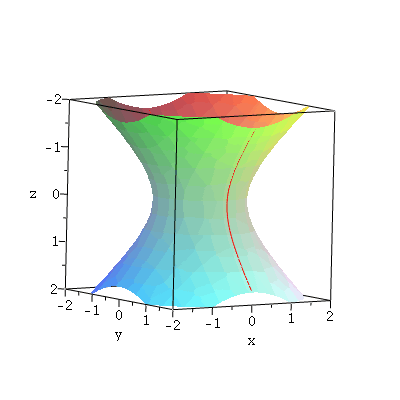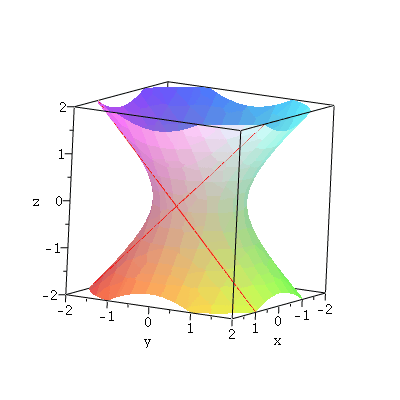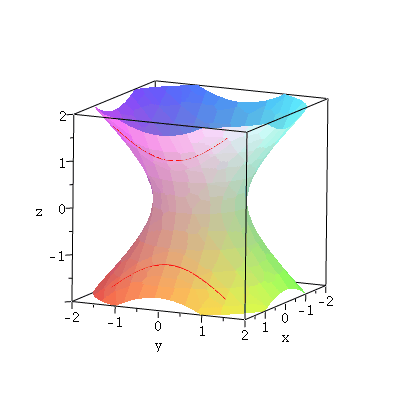September 3, 2010
Let's consider using slices to study the shape of the surface in
by the equation
First, the slice in the plane
shown in red:
MATH 241, section 1 -- Multivariable Calculus
The "Method of Slices"
September 3, 2010
Let's consider using slices to study the shape of the surface in ![]() defined
defined
by the equation ![]()
First, the slice in the plane ![]() -- the slice is the curve on the surface
-- the slice is the curve on the surface
shown in red:![]()
![]()
![]()
![]()
![]()
![]()
 |
Now the slice in the plane ![]()
![]()
![]()
 |
Finally, the slice in the plane ![]()
![]()
![]()
![]()
 |
The first and the third curve are both hyperbolas in those planes but note how
the shape changes as we go through the slice in the plane ![]()